AA-Sport > Basketball > Youth Storm overturns the afterglow of the dynasty: The Timberwolves dual cores go wild, 20 years of reincarnation witnesses the rise of new forces in the Western Conference Finals
Youth Storm overturns the afterglow of the dynasty: The Timberwolves dual cores go wild, 20 years of reincarnation witnesses the rise of new forces in the Western Conference Finals
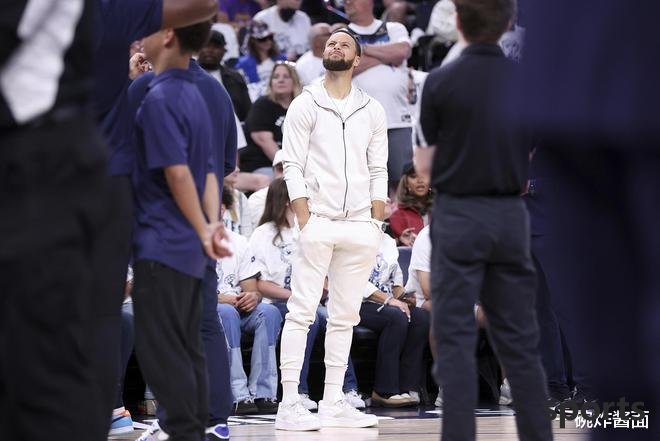
1. Curry's injury was a turning point. The Timberwolves used the "time and space dislocation" tactic to defeat the defending champion
(I) The fatal shortcomings of the Warriors' "Ku-free system"
When Curry missed four consecutive games due to a strained left leg hamstring, the Warriors' offensive system instantly degenerated into the original form of "Butler singles + Kumingga's chaos". Data shows that during Curry's absence, the Warriors' offensive efficiency plummeted from the top five in the league to 23rd place, while the Timberwolves narrowed their defenses in a targeted manner, forcing Butler (4 of 21 three-pointers in the series) and Hilder (only 8 points in the G5) to inefficient singles. In the third quarter of G5, the Warriors tried to counterattack after Podjemsky scored 8 points in a row, but Conley scored two consecutive three-pointers to destroy hope - this strategy of "strangling the core of the ball + making a shot without making a breakthrough" completely collapsed the Warriors' pass and cutting foundation.
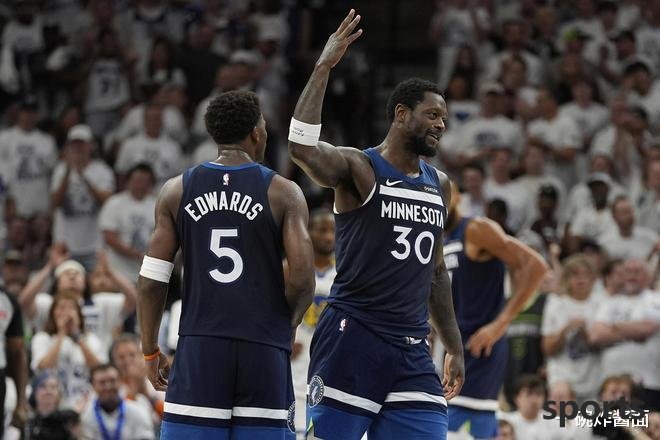
(II) Randle and Edwards' "dual-core resonance"
Randle showed the comprehensiveness of a "modern center" in the series: averaging 24.3 points + 8.1 rebounds + 5.3 assists per game, with a shooting percentage of 58% in the inside singles, and G5 even scored 29 points efficiently from 13 of 18 shots. His pick-and-roll cooperation with Edwards became a killer move. When Randle went down, Green and Kumingga of the Warriors found it difficult to take care of the frame protection and the switch, and Edwards used this to send 12 assists to revitalize the entire team. More importantly, Randall's restrictions on Green on the defensive end (Green's series plus or minus value -52) completely cut off the Warriors' offensive starting axis.
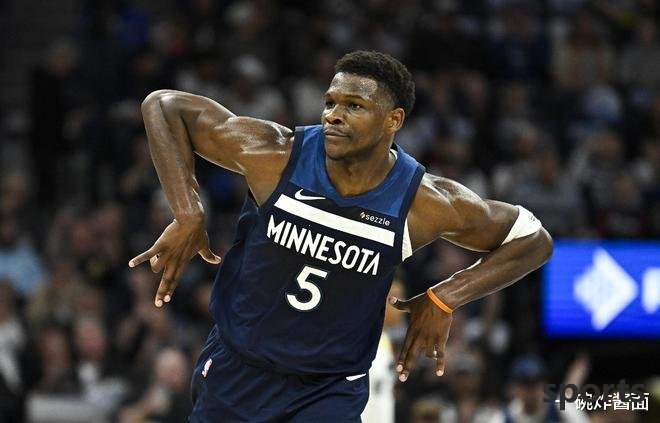
2. "Youth Crush" behind the data: The Timberwolves used three dimensions to rewrite the series
(I) Dimensional reduction strike of offense and defense conversion. The Warriors who lost Curry were forced to rely on positional battles, while the Timberwolves averaged 27.6 points per game through conversion offense, 9.2 points more than the Warriors. In the first quarter of G5, Edwards made a wonderful pass from Gobert to get an all-dunk during the counterattack, and then McDaniels made a quick break with a steal, hitting a 30-23 attack wave in a single quarter. This "rebound-propulsion-end" blitz allowed the Timberwolves, with an average age of 26.7, to completely suppress the Warriors' aging defense line.
(II) The generational gap in inside dominance The "Two Towers" composed of Gobert and Randall are asking for help in the inside: they average 52.8 rebounds per game in the series (41.2) and scored 48.4 points in the penalty area (34.6). In G5, Gobert faced Post and Kumingga's successive defense, and efficiently scored 17 points and 8 rebounds on 7 of 13 shots, and even sent 3 blocks on the defensive end. This "muscle jungle" confrontation has left the Warriors' small ball tactics without any room to be used in the paint area.
(III) The "Big Heart" showdown of the key gentleman When the Warriors narrowed the gap to 9 points in the final quarter, Edwards hit a key three-pointer to stabilize the morale, and then McDaniels made a steal and counterattack to succeed. This "chasing each other" posture exposed the psychological quality differences between the two teams: Edwards hit a shooting percentage of 58% at the critical moment of the series (within 5 points in the last 5 minutes), while Butler was only 32%. This "big heart" performance is a sign that young teams are moving towards maturity.
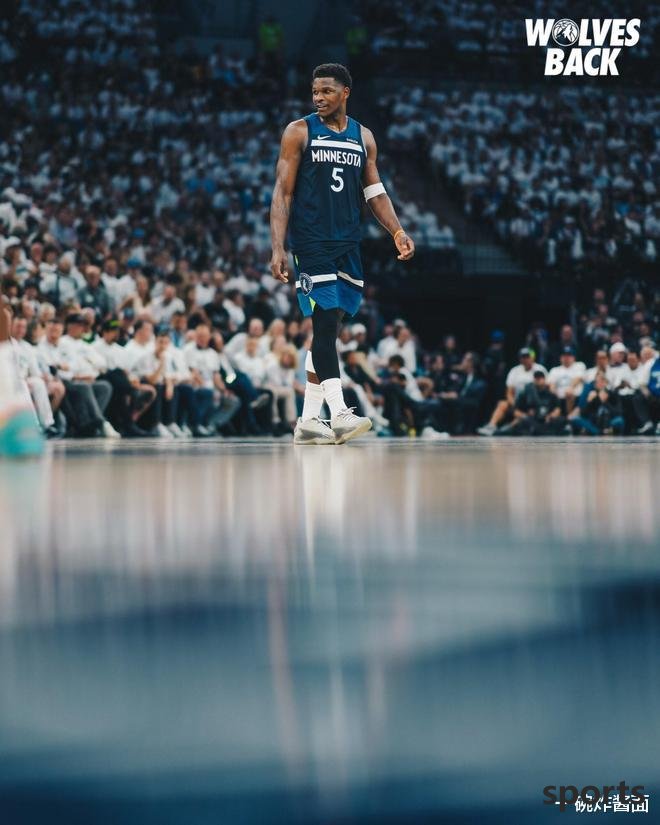
3. 20 years of reincarnation: From the era of the Wolf King to the rise of Huazi, the revelation of the Timberwolves' road to reconstruction
(I) Accurate balance between draft and trading The Timberwolves' reconstruction can be regarded as a textbook operation: in 2020, Edwards was selected with the No. 1 pick, and then Gobert strengthened the inside through the trade, and at the same time, using Conley's experience to connect offense and defense. More importantly, the management dared to give up high-ranking parallels such as Culver and instead train low-ranking uncensored jades such as McDaniels and Reed. This "unconventional talent reduction" strategy allows the team's salary structure to always maintain flexibility. ### (II) Coach Finch's tactical innovation Coach Finch perfectly combines the "magic ball theory" with traditional inside tactics: on the one hand, Edwards averages 10.2 three-pointers per game (3.8 hits in the series), and on the other hand, Randall plays singles at low posts (scoring 1.12 points per game, top 10% of the league). This "dual track" offensive system not only exerts the impact of young players, but also activates the veteran's experience value.
(III) Double deconstruction of historical significance This is the first time that the Timberwolves have returned to the Western Conference Finals since the Garnett era in 2004, and it is also the second time that the team has broken through the second round of the playoffs in the team's team history. More importantly, they broke the inherent perception that "rebuilding the team takes more than 5 years" - from Edwards joining in 2020 to advancing to the Western Conference Finals in 2025, they completed their transformation in just five years. The success of this "Youth Storm" provides a new model for other teams in the league to rebuild. ## 4. Outlook for the Western Conference Finals: In the face of the Thunder/Nuggets, can the Timberwolves' "invincible youth" continue? If the Timberwolves finally face the Thunder, Edwards and Alexander's "post-00s showdown" will become the focus. The similar fast-paced play of the two teams may give rise to an offensive battle that averages more than 120 points per game, but the Timberwolves' inside advantage (Gobert + Randall) may become the winner. If the opponent is the Nuggets, Jokic's ability to respond will test the Timberwolves' joint defense system, but Edwards' breakthrough and Randle's singles are expected to become key weapons to crack the "one-star shooting". No matter who the opponent is, this Timberwolves has proven that when youth and tactics are perfectly integrated, any dynasty may be overturned.
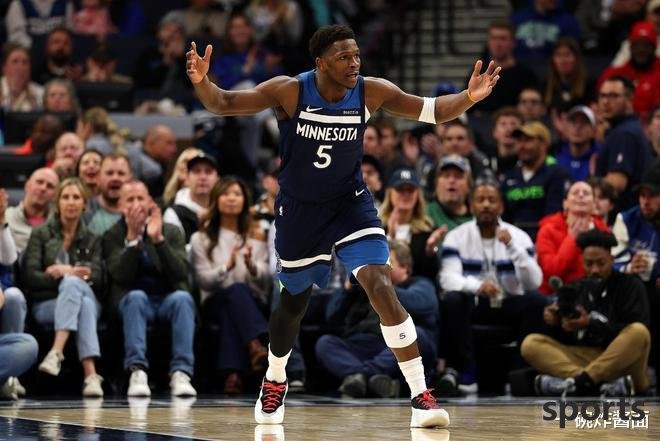
Conclusion:
With 20 years waiting for a transformation, the Timberwolves' "Youth Revolution" is reshaping the alliance pattern. From the tragic leadership of Garnett's single-core team to the rise of Edwards and Randle's dual-core core, the Timberwolves spent 20 years writing an epic of "persistence and transformation". Their success is not only about returning to the Western Conference Finals, but also about proving that young teams can complete the leap from bottom to favorites in a short period of time through scientific team building, tactical innovation and psychological quality breakthroughs. When Huazi hit the game-killing three-pointer in G5, Minnesota fans can finally proudly declare that the era of Timberwolves is really here. How far do you think this youthful teacher can go? Welcome to leave your opinions in the comment section.
Related Posts
Pelicans official announcement! Looney has sprained his left knee ligament and will be sidelined for at least 2-3 weeks. The old player once said that the Pelicans were cursed.
BasketballOn October 16, the Pelicans suffered another injury. The team's new aid Looney was determined to be injured for at least 2-3 weeks. The New Orleans Pelicans officially announced that Kevin Looney was diagnosed with a sprain of the proximal tibio...
moreIf Shepard is traded after 20 games, Udoka will definitely choose between Whitehead and Holiday.
BasketballThe Rockets are basically certain that Shepard will enter the starting lineup and may give him 20 games. If that doesn't work, the Rockets will make a decisive trade. Udoka should prefer White or Jrue Holiday. White and Jrue Holiday won a champi...
moreEzeli: Curry’s leadership attracted players to join KD& & Wiggins all left with championships
BasketballOctober 15th Recently, former NBA player Ezeli talked about his former teammate Curry on the "DubsTalk" program. Ezeli said: "Warriors fans, please cherish this time. They have won for 13 years. This kind of thing rarely happens...I h...
more
Hot Posts
- Warriors: Petition Seth Curry to become the number one jersey sales in the season
- Congratulations to the Lakers! The forward line is traded, and it would be perfect to trade Reeves for Avdia
- The curtain of the NBA in the new season is about to kick off, and the heroes compete for the destiny
- Lakers General Manager Robert Pelinka was interviewed and responded positively to various speculations surrounding LeBron James recently
- US media commented on the strongest player every year in the 21st century: James dominated in 8 years, O Pang Kobe Jokic dominated in three consecutive games
- Only 505 points away, this 51-year NBA record will be broken by Westbrook in the new season
- The Lakers are really ungrateful! If James hadn t joined, the Lakers Dynasty would have collapsed long ago
- HG08 2025 NBA Finals: 4 Things to Watch in Game 6 of the Finals
- Young Hero! Jaylenway scored 40+ in the finals in the first three years of his career. In 2006, Wade s first player
- G1 in the Eastern Conference Finals made a shocking comeback! Brunson scored 40+, but he said this when interviewing him after the game!
Recent Posts
-
Interestingly, former Lakers and Warriors players, both reunited on the new team
-
What would happen if the Pistons chose Anthony that year? Big Ben: He will destroy the chemical reaction and cannot win the championship
-
Easily advanced 4-1 in the first round, creating a 20-point reversal in the second round! The NBA dark horse was born in the 24-25 season
-
Defensive team! The second team of the best! Mobley becomes the biggest winner in the NBA
-
Irving said: The Nets were skeptical about Nash s coaching period and did not fully support hiring him
-
Current redemption status of Nets KD transaction returns: 8 first rounds + 2 first round swap rights + Porter Xiao
-
Fate! Lillard s locker is next to Henderson. The team selected the latter and prompted the former to leave the team.
-
Nuggets are on the verge of being eliminated 2-3, Westbrook s wife angrily tear up ESPN s famous reporter: No quality
-
Curry: This injury was a heavy blow. I am still a long way from being able to shoot at a fixed point.
-
$100 million in 2 years! Durant is expected to reach a contract renewal with the Rockets